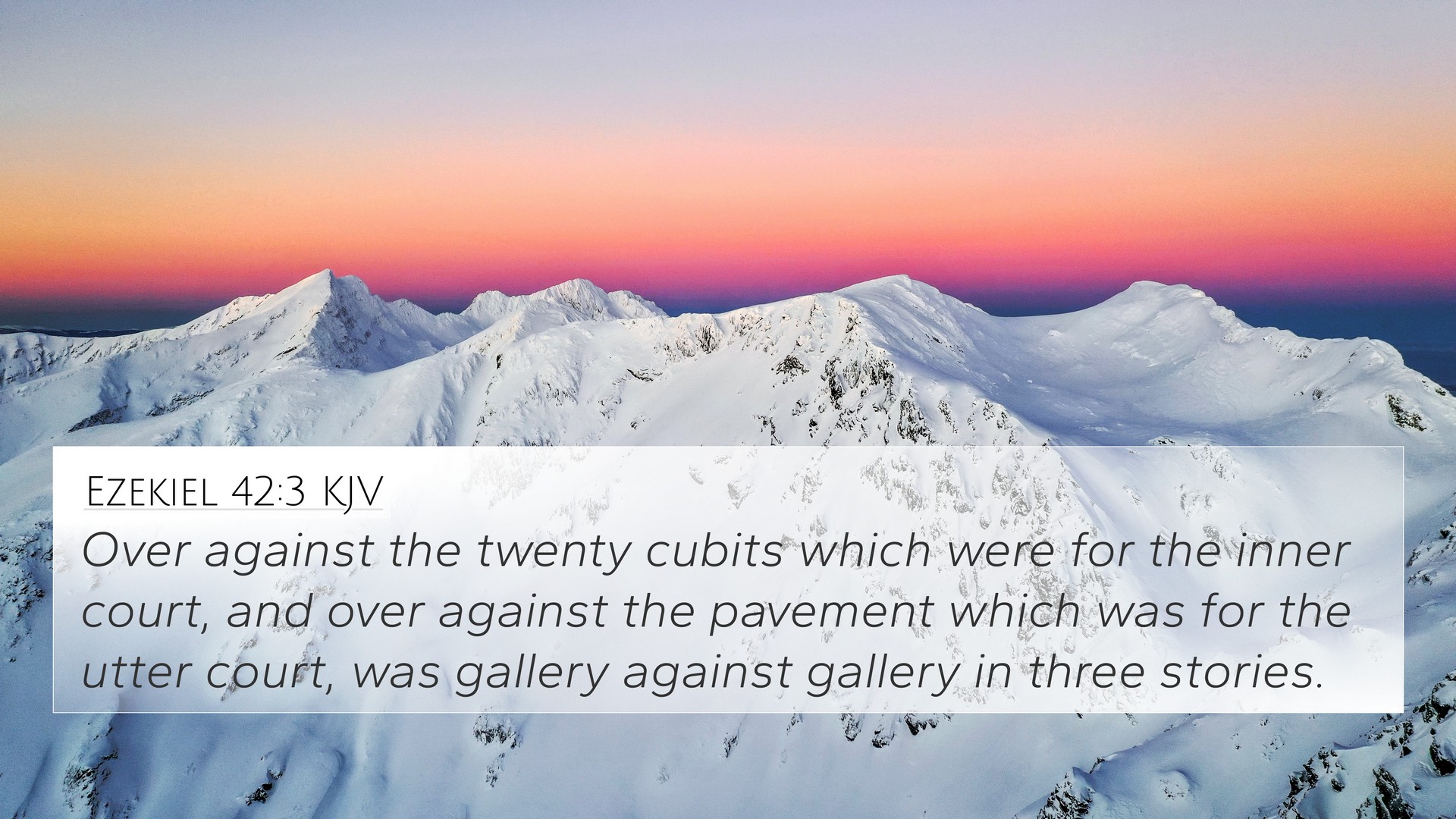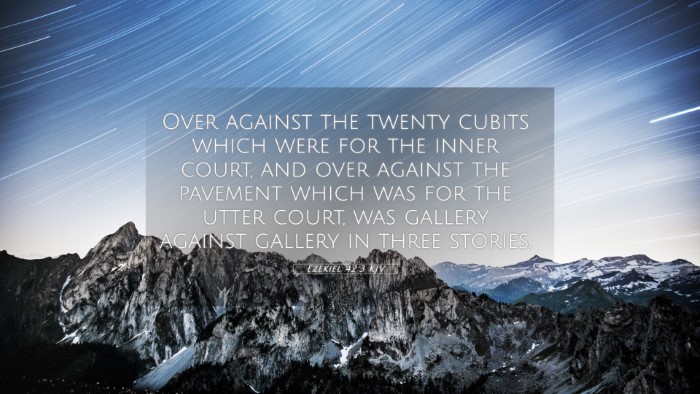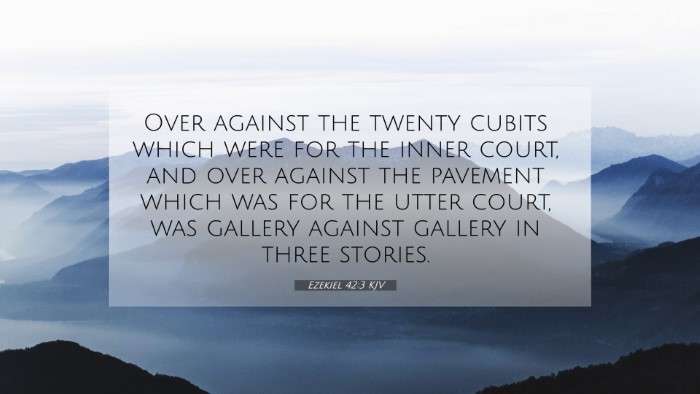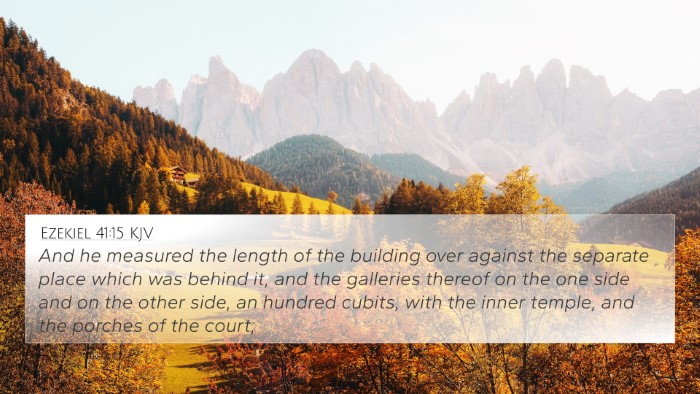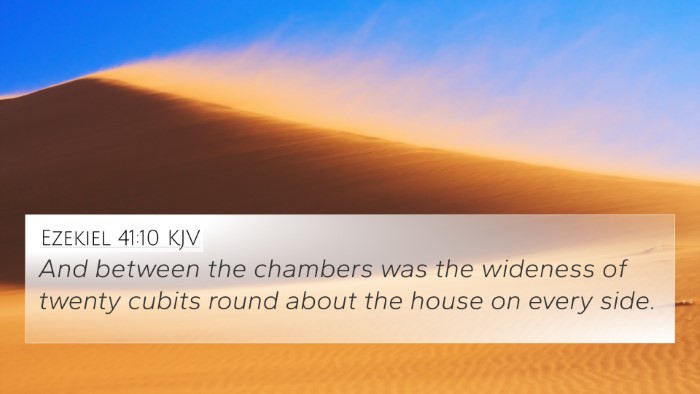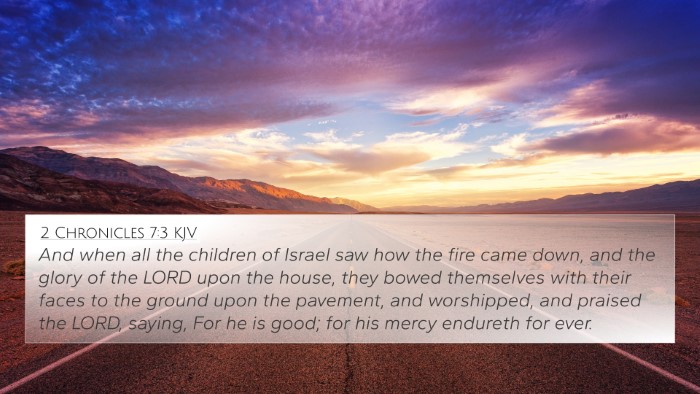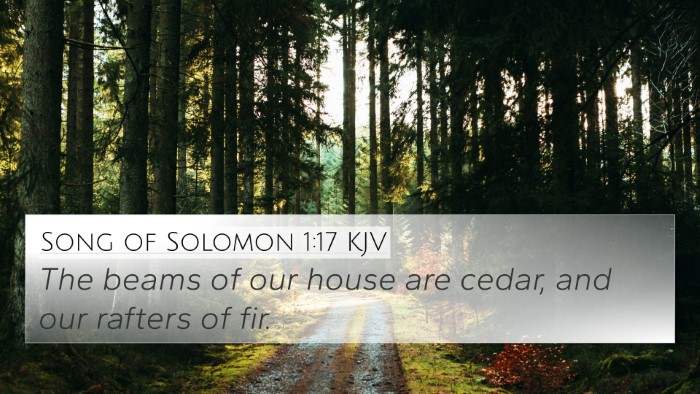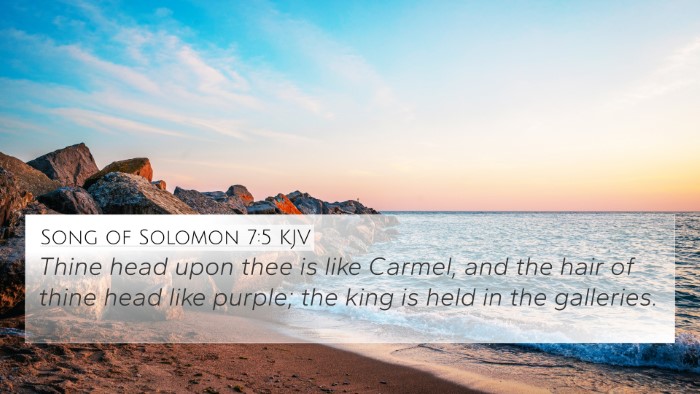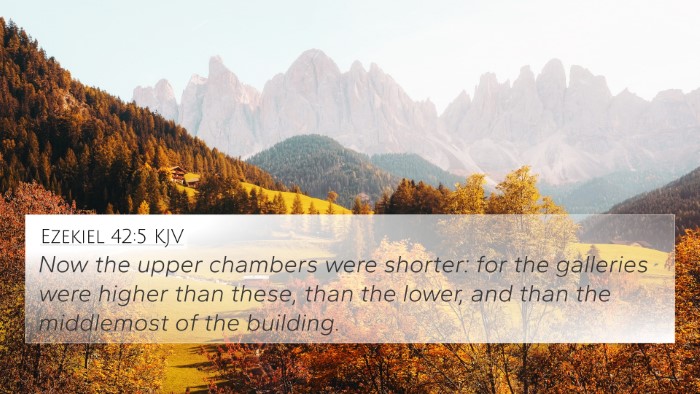Ezekiel 42:3 - Understanding the Verse
The verse Ezekiel 42:3 is a fascinating passage that reflects dimensions of God’s holiness and the provision for worship in the Temple. This summary draws on several esteemed public domain commentaries to delve into its meanings.
Verse Context and Overview
Ezekiel 42:3 states: “Over against the twenty cubits, which were for the inner court, was the narrower place, which was for the priests, and the place where they shall eat the most holy things.” The passage is situated in a prophetic vision where Ezekiel describes the future Temple and its sacred spaces.
Interpretation Insights
- Matthew Henry's Commentary:
Henry notes that the layout of the Temple exemplifies God's order and holiness. The priests are given specific places that emphasize their role in worship and their necessity for separation from the profane. This passage underscores the importance of holiness in approaching God.
- Albert Barnes' Notes:
Barnes emphasizes that this description points to the configuration of the sacred space in relation to their duties. The mention of “most holy things” serves as a reminder that there are aspects of worship which must be treated with distinct reverence and care.
- Adam Clarke's Commentary:
Clarke draws attention to the dimensions provided and their symbolic meaning. The narrowness of the place for priests represents a dedicated, exclusive community designed for specific spiritual functions. He suggests that this reflects the separation required in service to the divine.
Thematic Bible Verse Connections
Understanding Ezekiel 42:3 also invites connections with various biblical themes and cross-references. Notably, the passage resonates with teachings surrounding temple worship and the holiness required in approaching God.
Cross-References to Consider
- Exodus 28:1: Discusses the consecration of priests, emphasizing their special role in the worship of God.
- Leviticus 10:10: Highlights the distinction between holy and profane, an important theme in the context of worship spaces.
- Hebrews 9:1-5: Provides a New Testament reflection on the sanctuary, thereby connecting the old covenant worship with the new.
- 1 Peter 2:9: Highlights believers as a royal priesthood, tying the roles of the Old Testament priests to the identity of Christians today.
- Revelation 21:22: Continues the theme of worship in the New Jerusalem, emphasizing God’s presence and worshiping community.
Insights on Building a Cross-Referencing Practice
For individuals eager to explore the interconnectedness of scriptures, employing cross-referencing Bible study methods can be invaluable. Here are tips utilizing tools and resources to deepen understanding:
- How to use Bible cross-references: Start by noting down verses that relate thematically or contextually to Ezekiel 42:3.
- Bible concordance: Utilize a concordance to find keywords common to the concepts laid out in this verse.
- Cross-reference Bible study: Engage with the verse by comparing it with others that touch on similar aspects of holiness and priesthood.
The Importance of Holiness in Worship
The structural arrangement of the Temple and the regulations concerning the priests speak volumes about the necessity for holiness when worshiping God. It implies not just physical positioning but also a spiritual state that practitioners must strive for in their relationship with God.
Conclusion
Ezekiel 42:3 provides rich insights into God’s designs for worship and the reverence required in a holy space. By understanding this verse through the lenses of respected commentaries and linking it with parallel scriptures, readers are equipped to appreciate the layers of meaning embedded within these words.
Further Study
To further immerse oneself in the study of inter-Biblical dialogue, consider exploring related passages and maintaining an active practice of cross-referencing. Discovering the threads that bind biblical texts together enriches the reader’s comprehension of the overall narrative of Scripture.
